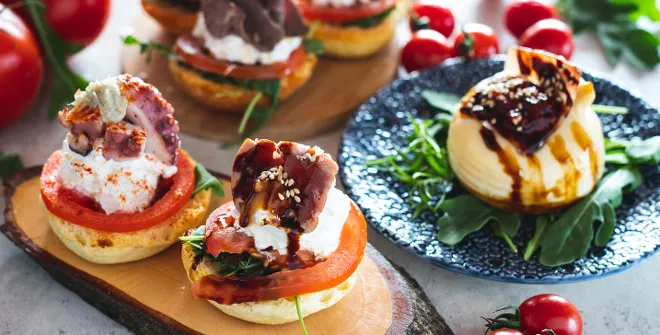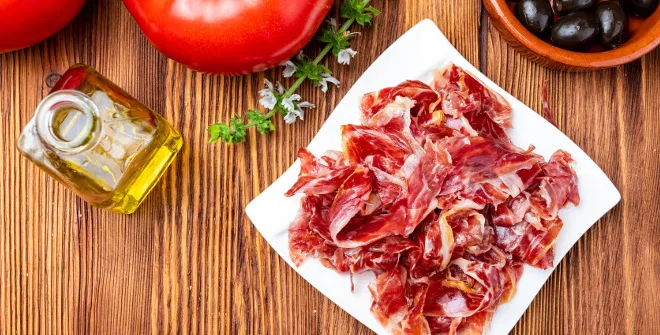Madrid, Capital of Ibero-American Cuisine
COME TO MADRID AND DISCOVER AMERICA!
One of the most enjoyable things of Madrid is travelling around the city in search of different flavours. Although you can savour cuisine from the five continents, the capital of Spain stands out for being the ideal European city to become immersed in the delicious and increasingly thriving Iberian-American gastronomy.
More than 500 years of common history and entrepreneurial immigration that is proud of its roots have turned Madrid into the natural gateway to Iberian-American flavours. Come to Madrid and savour America as there is a good reason why it is the Iberian-American Capital of Gastronomic Culture in 2020 and 2021. Don’t miss the Iberian-American Map with all of the information on the gastronomic culture of this area, restaurants in Madrid to savour its dishes and markets to buy the ingredients for its most typical dishes.
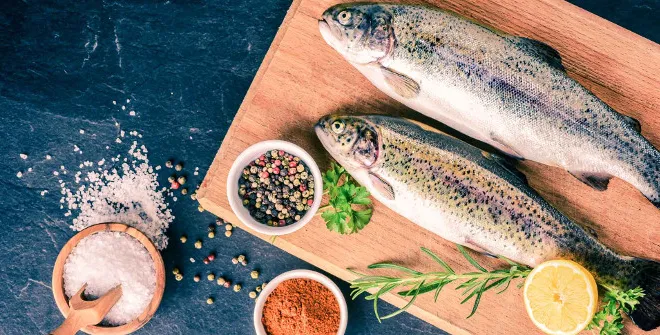
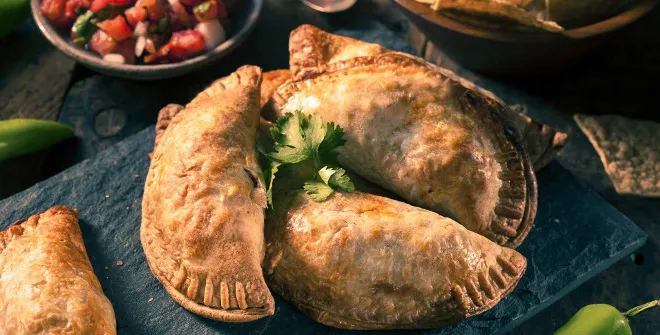
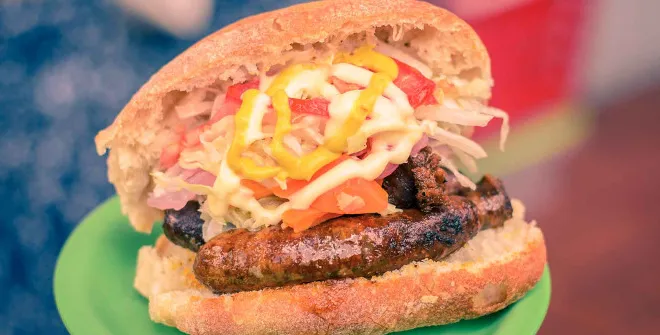
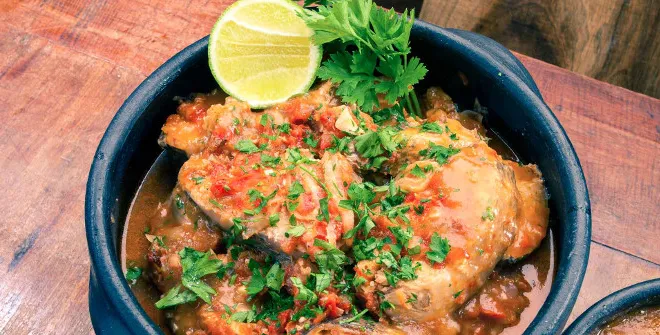
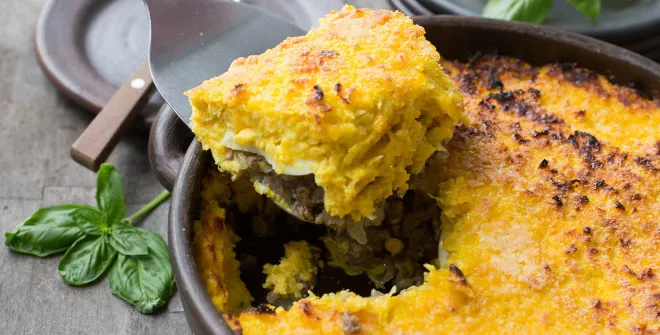
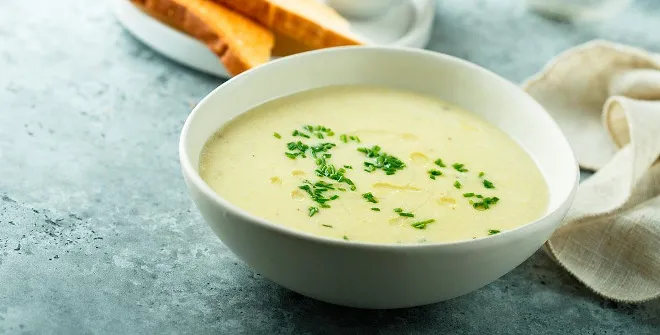
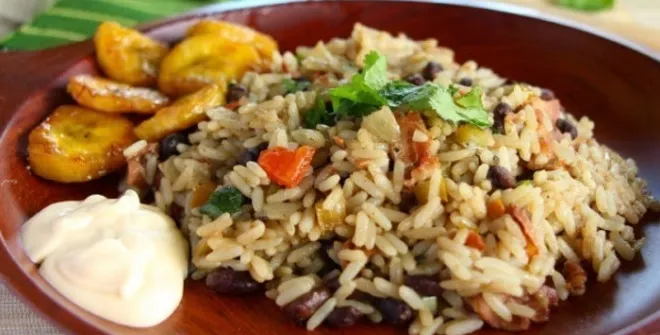
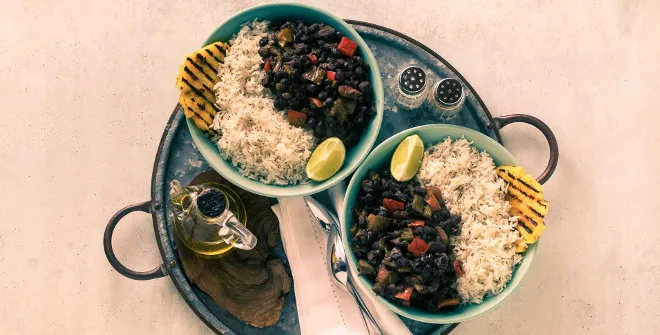
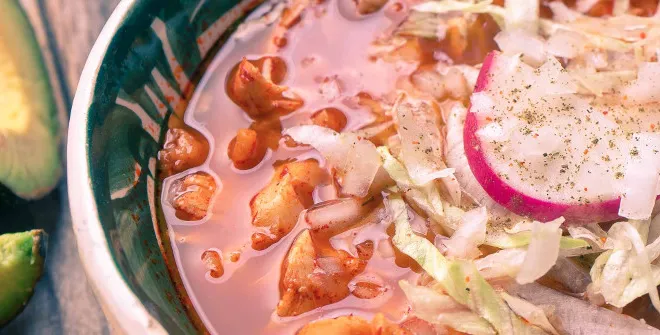
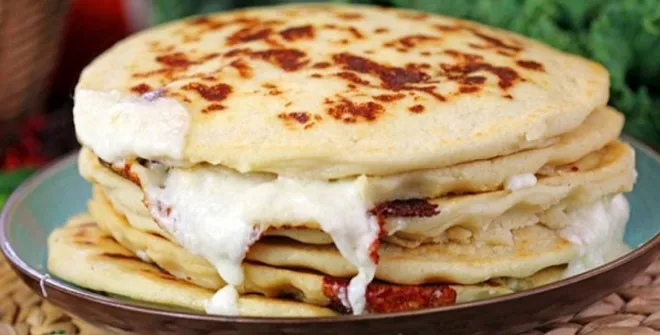
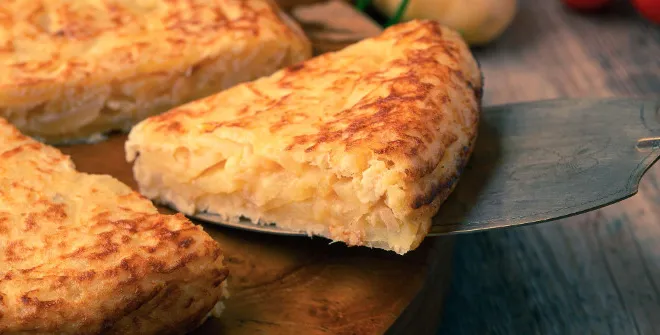
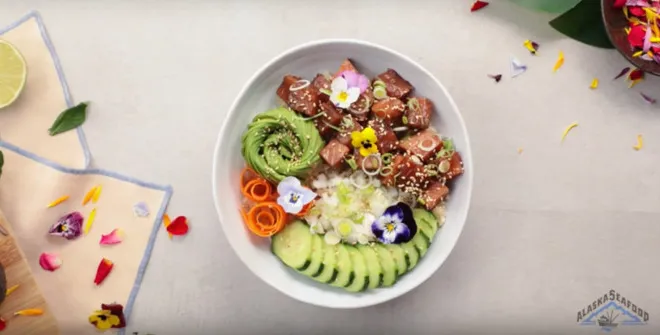
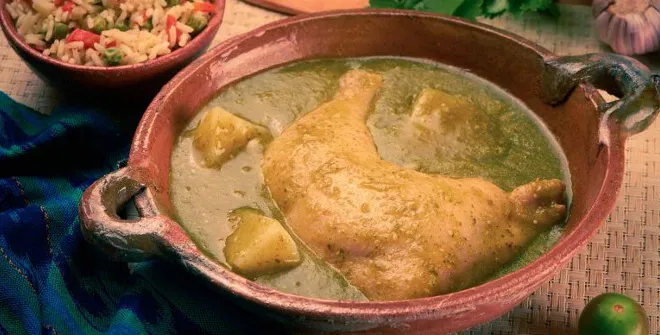
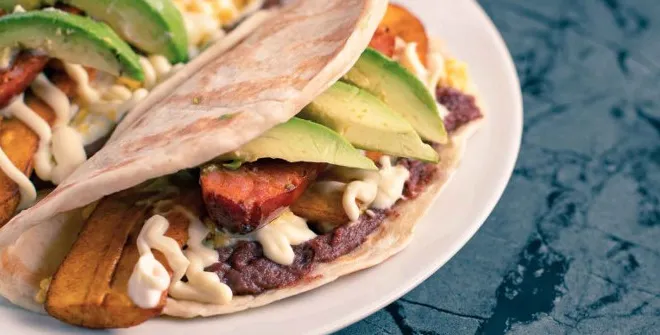
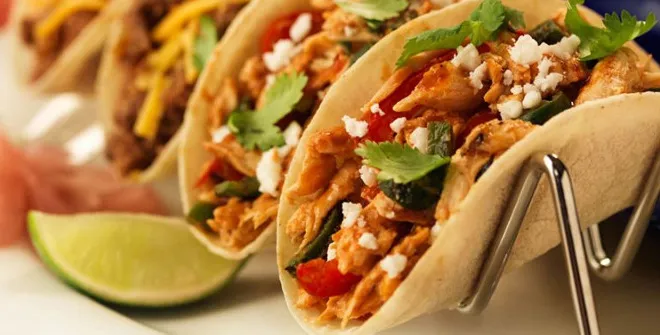
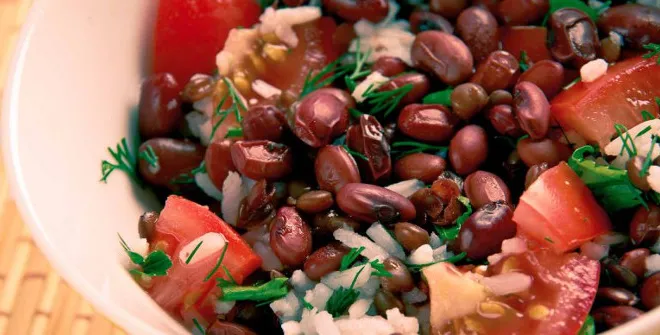
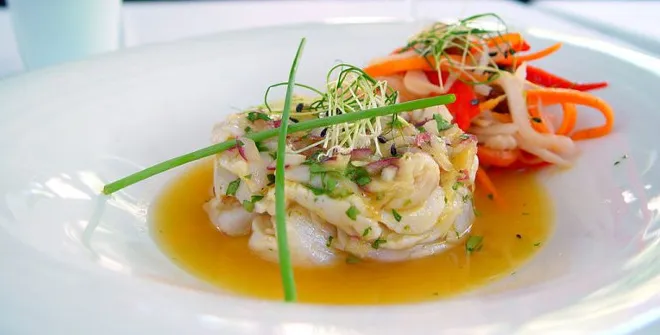
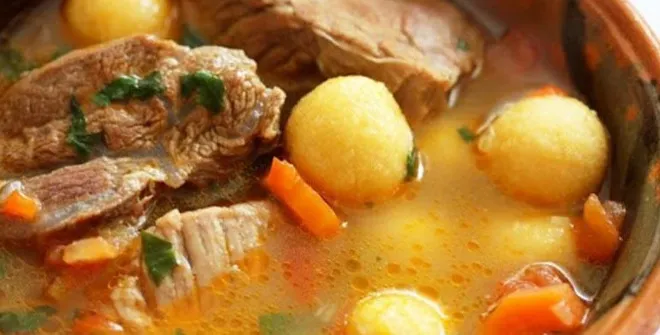
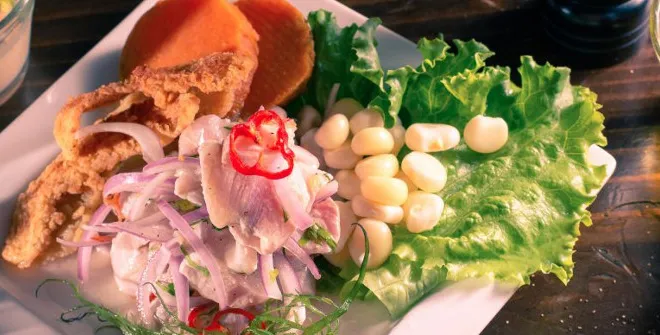
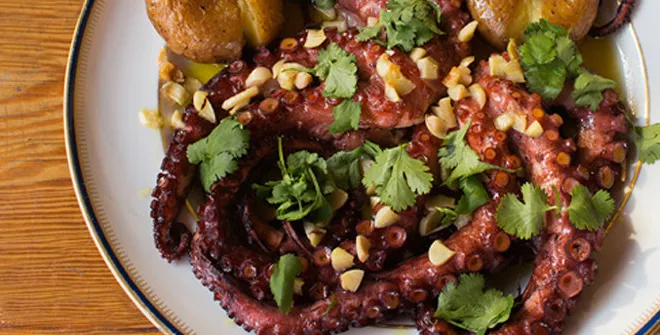
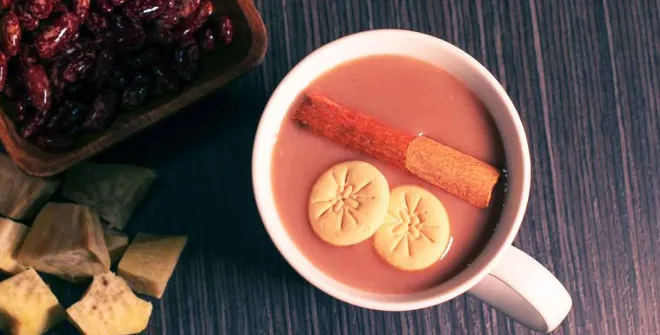
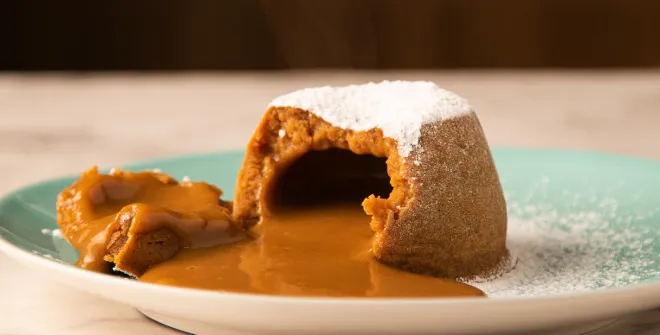
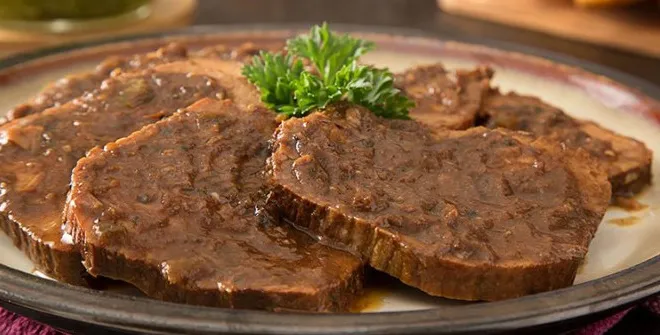
The gastronomy of Andorra is directly related to its location. It includes mountain flavours and aromas and uses meat products. It shares cultural and culinary identity with neighbouring areas on both sides of the border, particularly with French Provençal cuisine. Its cuisine stands out for the use of ingredients, such as bacon, fish, meat (rabbit, goat and lamb), cold meats, such as bringuera, vegetables, cereals and fruits of the forest, carvery.
- Typical Dishes: La Escudella (traditional meat stew with sausage); Trinxat (hashed potatoes and cabbage); Andorra-style Cannelloni; Andorra-style river trout; wild mushrooms.
Where can you sample its gastronomy in Madrid?: Casa Toni (Calle de la Cruz, 14), whose specialities include pig’s ear, sweetbreads and Iberian pork.
Further information: https://madridgastronomica.es/mapa-iberoamericano/andorra/
Typical Argentinean gastronomy brings together dishes from the native villages of America with European cuisine in general and Italian and Spanish cuisine in particular. Each of its recipes may include a local variant depending on the products in each area. The most popular and finest foods include Argentinean meat, famous for its cuts and its preparation on the grill. Mate tea is the national drink par excellence and consists of an infusion made of yerba mate leaves and it is present at all meetings and social gatherings.
- Typical Dishes: Argentinean roast; Neapolitan-style Milanesa; Grilled Meat; Creole Empanada; Locro stew; Choripán (chorizo sandwich); Bife de Chorizo (Steak); Chocotorta; Dulce de Leche; Alfajores (small sponge cakes filled with creamy toffee).
Where can you sample its gastronomy in Madrid?: Che Pibita (Modesto Lafuente, 64); El Cacique (Padre Damián, 47); El Viejo Almacen de Buenos Aires (Ramón Gómez de la Serna, 4); La Cabaña Argentina (Ventura de la Vega, 10); Mu! El placer de la carne 1 (Chinchilla, 3); Mu! El placer de la carne 2 (Victoria, 12); Parrilla El Gaucho (Tetuán, 34); Picsa (Ponzano, 76)
Further information: https://madridgastronomica.es/mapa-iberoamericano/argentina/
Essential ingredients of Bolivian cuisine that stand out are potatoes, chilli and meat, along with locoto. Empanadas are its most typical dish, as well as quinoa, other root vegetables and tropical fruit. One type of food that crosses the entire country is maize, which is essential for the preparation of humitas (thick corn sauce wrapped in corn leaves) and tamales (shredded meat wrapped in corn dough). Deserts and sandwiches, such as salteña (Bolivian baked empanada) stand out, which is consumed all over the country and is one of the most highly rated sandwiches. The most popular drinks include mocochinchi, tamarind, linseed, somó and cañahua.
- Typical Dishes: Chola Sandwiches; Ají de Lengua; Silpancho
Where can you sample its gastronomy in Madrid?: La perla boliviana (Monederos, 42), whose specialities are salteñas, spicy chicken and peanut soup.
Further information: https://madridgastronomica.es/mapa-iberoamericano/bolivia/
Brazilian cuisine has indigenous, African and European influences. Its strategic location on the continent, its vast extension and its history makes its gastronomy extremely varied. It is worth highlighting that each region of the country adapts its recipes to the climate and the geography. The most common ingredients included in its dishes are yucca, coconut, black beans and rice. One of the most popular drinks in Brazil is caipirinha, whose origins date back to the 19th century, but its popularity came in 1918, at the time of the Spanish flu, where it started being used thanks to its medicinal purposes.
- Typical Dishes: Paulista Couscous; Fish Moqueca; Quindim (custard desert); Brazilian Moqueca (seafood stew).
Where can you sample its gastronomy in Madrid?: Amazónico (Jorge Juan, 20); Casa Jaguar (Caños del Peral, 9); Los Espetinhos (San Bernardo, 85); O Boteco (Donoso Cortés, 28); Rubaiyat (Juan Ramón Jiménez, 37); Sabor Gaucho (Orense, 83)
Further information: https://madridgastronomica.es/mapa-iberoamericano/brasil/
If you visit the streets of Santiago, having a completo (type of hot dog) and churrasco (grilled meat) is a must. Avocado, known as palta, is typical in its gastronomy. It is usually accompanied by one of its famous breads, such as marraqueta (French bread) or hallulla. The use of corn, or choclo as it is known in Chile, is very common in its gastronomy, along with potato and kidney beans.
- Typical Dishes: Wheat Pebre Sauce; Traditional corn pie; Pine Empanadas; Meatloaf; Palta; Pancakes; Humitas
Where can you sample its gastronomy in Madrid?: Como en Chile (Fernando el Católico, 53); El terremoto de Atocha (Atocha, 84); Mia Bakery (Víctor de la Serna, 6); San Wich (Hortaleza, 78)
Further information: https://madridgastronomica.es/mapa-iberoamericano/chile/
It is possible to embark on a gastronomic journey around the country through its food, ranging from ajiaco soup, typical of Bogota, to the fried snapper of the Caribbean. Another star product is Columbian coffee, whose cultivation dates back more than 300 years and boasts a Designation of Origin. The coffee cultural landscape is made up of four departments and was declared Cultural Heritage of Humanity by UNESCO. It also stands out for its typical alcoholic drink: brandy.
- Typical Dishes: Cheese Mote; Colombian Fritters; Pipian Empanadas; Corn Patties; Colombian soup
Where can you sample its gastronomy in Madrid?: La Aguacatala (Paseo de Santa María de la Cabeza, 16); La Fogata (Puente de Segovia, 1); La Fonda de Colombia (Ferroviarios, 27); La Papita (Pensamiento, 1); La Poderossa (Embajadores, 92); La Rochela (Cardenal Cisneros, 58); La Suegra (Castrojeriz, 18); Patacon Pisao (Delicias, 10); QUIMBAYA (Zurbano, 63)
Further information: https://madridgastronomica.es/mapa-iberoamericano/colombia/
The typical food of Costa Rica incorporates many native ingredients, including delicious and colourful tropical fruit, such as pineapple or papaya. These fruits can be enjoyed naturally, in ice creams or accompanied by the finest rums or brandy. Another traditional ingredient is tubers or root vegetables, such as yucca or chayote.
- Typical Dishes: Coconut Fudge; Pot Roast ; Gallo Pinto (Rice and Beans)
Further information: https://madridgastronomica.es/mapa-iberoamericano/costa-rica/
The Creole gastronomy includes characteristic ingredients, such as garlic, onion, chilli, cumin, oregano and bay and its main dishes include fish, seafood, molluscs and roast pork, which is known as puerco in Cuba. Cerco is traditionally served accompanied by rice, Moros y Cristianos (Cuban version of rice and beans) or congri (coloured beans and rice). Three classic Cuban cocktails stand out: cuba libre, rum and coke; daiquiri, white rum and lemon juice; and mojito, which is prepared with lemon juice, sofa, peppermint and white rum. There are several restaurants that are a must: La Bodeguita del Medio, El Floridita Bar-Restaurant, Tropicana cabaret and Gato Tuerto.
- Typical Dishes: Guava shells in syrup; Moros y Cristianos (Cuban version of rice and beans); Roast leg of pork; Cuban Meat Stew; Meat Ragout
Where can you sample its gastronomy in Madrid?: Al Son de Cuba (Gral. Lacy, 11); Borax (Pelayo, 28); Cuando Salí de Cuba (Ternera, 4); El Rincón de Marco (Cabestreros, 10); Havana Blues (Paseo de Santa María de la Cabeza, 56); La Negra Tomasa (Cádiz, 9); Madrid Habana (Eduardo Galeano, 6)
Further information: https://madridgastronomica.es/mapa-iberoamericano/cuba/
The gastronomy of Ecuador is characterised by local ingredients found in each region. Corn, cocoa, quinoa, banana and potato stand out whereby around 350 native varieties of potato are produced according to the Ecuador Gastronomic Map. As far as its liquid gastronomy is concerned, coconut milk, chicha and coffee stand out as Ecuador has almost all varieties of Arabian and Robusta.
- Typical Dishes: Fish Stew; Mote Pillo (hominy corn with scrambled eggs); Fish Encocado
Where can you sample its gastronomy in Madrid?: Akipan (Av. de Peña Prieta, 30); Asadero Miguel Ángel (Plaza de los Mostenses, 1); Casa Ecuador (Murcia, 5); El Rincón Ecuatoriano (Barco, 8, 2); El Rincón Montubio (Sanz Raso, 35); El Salón de Otoño (Bustamante, 5); El Socio (Argüeso, 32); La Casita Latina (Costanilla de los Ángeles, 15); Los Mesegares (Juan Alonso, 6); Reina del Quinche (San Felipe, 4)
Further information: https://madridgastronomica.es/mapa-iberoamericano/ecuador/
The most commonly used ingredients of its gastronomy are corn, beans, rice, along with seafood, dairy products and numerous fruit and vegetable. The dishes in its gastronomy are the result of the union between the ancient indigenous traditions and the European and African culture. Beef is the country’s most consumed meat, followed by chicken and pork.
Where can you sample its gastronomy in Madrid?: JuanJuan (San Marcos, 24); Madrid Rio Grande Café (Vicente Carballal, 16); Pupusería Madrid La Ceiba (Antonia Lancha, 20)
Further information: https://madridgastronomica.es/mapa-iberoamericano/el-salvador/
Spanish cuisine is varied and headed by the Mediterranean diet, which includes legumes, cereals, meat, fish, vine and olive oil. Its production of vegetable-origin food has made it known as the “vegetable patch of Europe”. Bars and tapas are the flagship of the Spanish gastronomic culture, which is rounded off with popular drinks such as beer, cider, sangria and wine.
- Typical Dishes: Valencian Paella; Spanish Omelette; Andalusian Gazpacho; Asturian bean stew; Galicia-style octopus
Where can you sample its gastronomy in Madrid?: La Paella de la Reina (Reina, 39); Las Tortillas de Gabino (Rafael Calvo, 20); La Cocina de San Antón (Augusto Figueroa, 24); Lambuzo (Avenida de Menéndez Pelayo, 59)
Further information: https://madridgastronomica.es/mapa-iberoamericano/espana/
American gastronomy maintains an international and varied spirit. Typical dishes from different parts of the world, such as Europe or South America can be found in each region of the country. Some of the best known ingredients are those of marine origin or almonds, as well as turkey, the main dish that is served for Thanksgiving.
- Typical Dishes: Lobster Roll; Black Bean Brownie; Wild chum salmon from Alaska poke bowl
Where can you sample its gastronomy in Madrid?: Alfredo’s Barbacoa (Juan Hurtado de Mendoza, 11 / Lagasca, 5 / Conde de Aranda, 4); Burnout (Fuencarral, 148 / Valverde, 6); Five Guys (Gran Vía, 44 / Adolfo Bioy Casares, 2 / Antonio López, 109 / Serrano, 45 / Paseo de la Castellana, 75); Goiko Grill (Various establishments: Avenida de Niza 42 / Silvano 77 / Conde de Peñalver, 41 / Pez, 36, etc.); Gumbo (Pez, 15); Jimbo Smokehouse (Plaza del Descubridor Diego de Ordás, 4); New York Burger (Recoletos, 4 / Miguel Ángel, 16 / Pelayo, 5 /Paseo de la Castellana, 89); Steakburger (Various establishments: Arenal, 26 / Atocha, 110 / Fuencarral, 73 / Luchana, 17, etc.)
Further information: https://madridgastronomica.es/mapa-iberoamericano/estados-unidos/
Guatemalan gastronomy is the result of multi-culturality and includes elements from Mayan cuisine as well as Spanish influences. Some traditional dishes have been declared National Cultural Heritage, such as chicken jocon, kaq’ik (turkey legs cooked in a red broth), pepian and bananas in mole. One of the main bases of its gastronomy is corn, beans and chirmol, a tomato, chilli and onion sauce to add flavour to the dishes.
- Typical Dishes: Kak’Ik; Guatemalan bananas in mole; Guatemalan pepian
Further information: https://madridgastronomica.es/mapa-iberoamericano/guatemala
Typical Honduran cuisine combines different indigenous, Spanish and African flavours, resulting in dishes that are rich in colour, nuances and flavours. The main and most representative ingredients of its gastronomy are corn, beans, bananas, green bananas and coconut. They are joined by other tropical fruits, such as mango, papaya, plums, zapote, pineapple or passion fruit.
- Typical Dishes: Seafood Soup; Honey Doughnuts; Baleda flour tortilla; Honduran cottage cheese
Where can you sample its gastronomy in Madrid?: Bar Restaurante Honduras (Sanz Raso, 3); El sabor k-tracho (Francisco García, 19); Restaurante delicia de Honduras (Guadiana, 2); Rincón catracho (Vía Carpetana, 334)
Further information: https://madridgastronomica.es/mapa-iberoamericano/honduras/
The rich and varied Mexican cuisine has been declared an Intangible Cultural Heritage of Humanity by UNESCO. Heading the list of its most characteristic ingredients is corn, beans and chilli. Distilled agave, such as tequilla and mezcal, are world-renowned but Mexico is also a wine producer, particularly in some regions in the north of the country.
- Typical Dishes: Puebla-style Chiles en Nogada ; Red Posole; Tacos al pastor; Totopos; Enchiladas; Cochinita pibil (slow-roasted pork)
Where can you sample its gastronomy in Madrid?: Entre suspiro y suspiro (Caños del Peral, 3); La Malinche (Torija, 10); La Taqueria del Alamillo (Alamillo, 8); Mestizo (Recoletos, 13); Mezcal Lab (Gral. Pardiñas, 40); Salon Cascabel (Serrano, 52); Taqueria Mi Ciudad (Fuentes, 11); Tepic (Ayala, 14)
Further information: https://madridgastronomica.es/mapa-iberoamericano/mexico/
The gastronomy from Nicaragua is based on corn, which is present in many dishes and is an everyday ingredient for Nicaraguans. They also consume rice and fried beans, separately or scrambled together /gallopinto), as well as beef, chicken, pork, game and fish and seafood. It is worth highlighting dishes prepared in an original way, such as nactamales, made out of corn dough.
- Typical Dishes: Rondón; Roast Meat ; Gallo Pinto (Rice and Beans); Atol de elote; Nacatamal
Where can you sample its gastronomy in Madrid?: Los Nicas (Ferroviarios, 20); Pupuseria volcanes (Movinda, 1); Restaurante volcanes (Gral. Ramírez de Madrid, 14)
Further information: https://madridgastronomica.es/mapa-iberoamericano/nicaragua/
The cuisine from Panama stands out for being extremely diverse. Rice is an essential ingredient in many of its traditional dishes, as well as corn and banana, as well as fish, seafood and coffee. The gastronomy is the result of the historic influence of various cultures in the country, such as Amerindian, Hispanic, African, Afro-Antillian and American.
- Typical Dishes: Corvina ceviche with passion fruit sorbet; Beef Cassavra Pastries; San Blas lobster encocado
Further information: https://madridgastronomica.es/mapa-iberoamericano/panama/
Paraguay’s cuisine is a fusion between tradition and international influence. Its best known dishes include the curious Paraguay soup, a spongy and salted cake that is prepared with corn, eggs and onion. Its most popular drinks include tereré, a way of drinking the mate herb, as well as moringa, one of the locally-produced super foods.
- Typical Dishes: Vori Vori Soup; Paraguayan Soup; Kiveve
Where can you sample its gastronomy in Madrid?: Vicio’s Bar (Rosa de Silva, 2)
Further information: https://madridgastronomica.es/mapa-iberoamericano/paraguay/
Peruvian cuisine is the result of the integration between the culinary tradition of ancient Peru and Spanish, Chinese and Japanese gastronomy. One of its best known ingredients is potatoes, which have their own research space: the International Potato Centre, with its headquarters in Lima. Peru´s liquid gastronomy is headed by pisco, a grape brandy that was declared National Cultural Heritage in 1988.
- Typical Dishes: Suspiro Limeño (meringue desert); Peruvian Fish Ceviche ; Carapulcra; Lomo saltado (stir-fried beef and red onions mixed with potatoes)
Where can you sample its gastronomy in Madrid?: Capón By Jhosef Arias (San Isidoro de Sevilla, 4); El Inca (Gravina, 23); El Inti de Oro 1 (Edgar Neville, 17); El Inti de Oro 2 (Ventura de la Vega, 12); Kausa Madrid (Amor de Dios, 9); La Cevichería (Trafalgar, 8); Ronda 14 (Gral Oraá, 25); Tampú (Prim, 13)
Further information: https://madridgastronomica.es/mapa-iberoamericano/peru/
In Portugal, the gastronomy is heavily influenced by the presence of the ocean. Fish and seafood are essential ingredients in many of its typical dishes. On the other hand, cheese and wine are also two of its flagship food products. The influence of the former Portuguese colonies of Asia, Africa and America can also be noted, particularly the use of spices, including piri piri, paprika and cinnamon.
- Typical Dishes: Lagareiro-style octopus; Portuguese Green Broth; Cod à Brás
Where can you sample its gastronomy in Madrid?: Atlantik Corner (Pedro Muguruza, 5); Despacho del bacalao (Plaza de Cascorro, 6); KIP (Carranza, 4); La portuguesa taberna (Juan Álvarez Mendizábal, 39); Madere (Cardenal Cisneros, 19); Tras Os Montes (Senda del Infante, 28); Trasmontana (Bolívar, 18)
Further information: https://madridgastronomica.es/mapa-iberoamericano/portugal/
The Dominican Republic is the result of a union of Spanish, Taino and African products. One of the national ingredients is the banana, which is consumed and included in numerous recipes. Rice, meat, beans and fruit are extremely common in its dishes and its rum and cocoa are the most famous in the world.
- Typical Dishes: Bandera Dominicana; Chivo Liniero; Sweet Beans
Where can you sample its gastronomy in Madrid?: 809 Madrid Bar (Paseo de la Chopera, 57); El Arca (Paseo de Marcelino Camacho, 50); Kukaramakara (Cl. de San Evaristo, 3); La Cabaña de Cris (Huesca, 19); La Cibaeña (Carnicer, 4); La esquina Caribeña (Almansa, 14); Restaurante dominicano La Aguana (Gutierre de Cetina, 91); Santa Brasa (Melchor Fernández Almagro, 66)
Further information: https://madridgastronomica.es/mapa-iberoamericano/republica-dominicana/
One of the gastronomic emblems of Uruguay is undoubtedly the grilled meat platter. Its wines and mate tea also stand out. The dairy industry is highly developed, whereby Uruguay is one of the biggest producers of sweet milk.
- Typical Dishes: Coulant ; Steak with Chimichurri; Black corvina ceviche
Where can you sample its gastronomy in Madrid?: Charrúa Madrid (Conde de Xiquena, 14); La Mano de Pablo (Frómista, 14)
Further information: https://madridgastronomica.es/mapa-iberoamericano/uruguay/
The gastronomy of Venezuela is the result of the cultural fusion between autochthonous food from Europe and Africa. Its most popular dishes include arepa, which is a flatbread made out of corn, pabellón criollo (rise and beans), considered to be the national dish with numerous variants depending on the region where it is prepared.
- Typical Dishes: Creole black roast; Hen Salad; Tequeños; Venezuelan yucca fritters
Where can you sample its gastronomy in Madrid?: Apartaco (Luchana, 7); Cacao restobar (Moratín, 19); El atelier de Dina (López de Hoyos, 9); El Güero (Emigrantes, 2); Guasa Madrid (San Lorenzo, 9); La Cuchara (Conde de Peñalver, 82); Punto Criollo (Bravo Murillo, 122)
Further information: https://madridgastronomica.es/mapa-iberoamericano/venezuela/
DON’T MISS
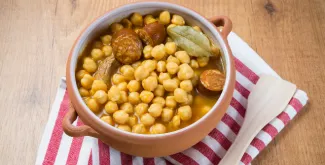
The Flavours of Madrid
Savoury dishes and sweets, tapas and wines of the land. What and where to eat in Madrid.
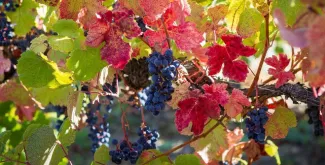
Enotourism in Madrid
Discover Spanish wines, among the best in the world , and the emerging wines from Madrid, which are increasingly elaborated and recognised.
